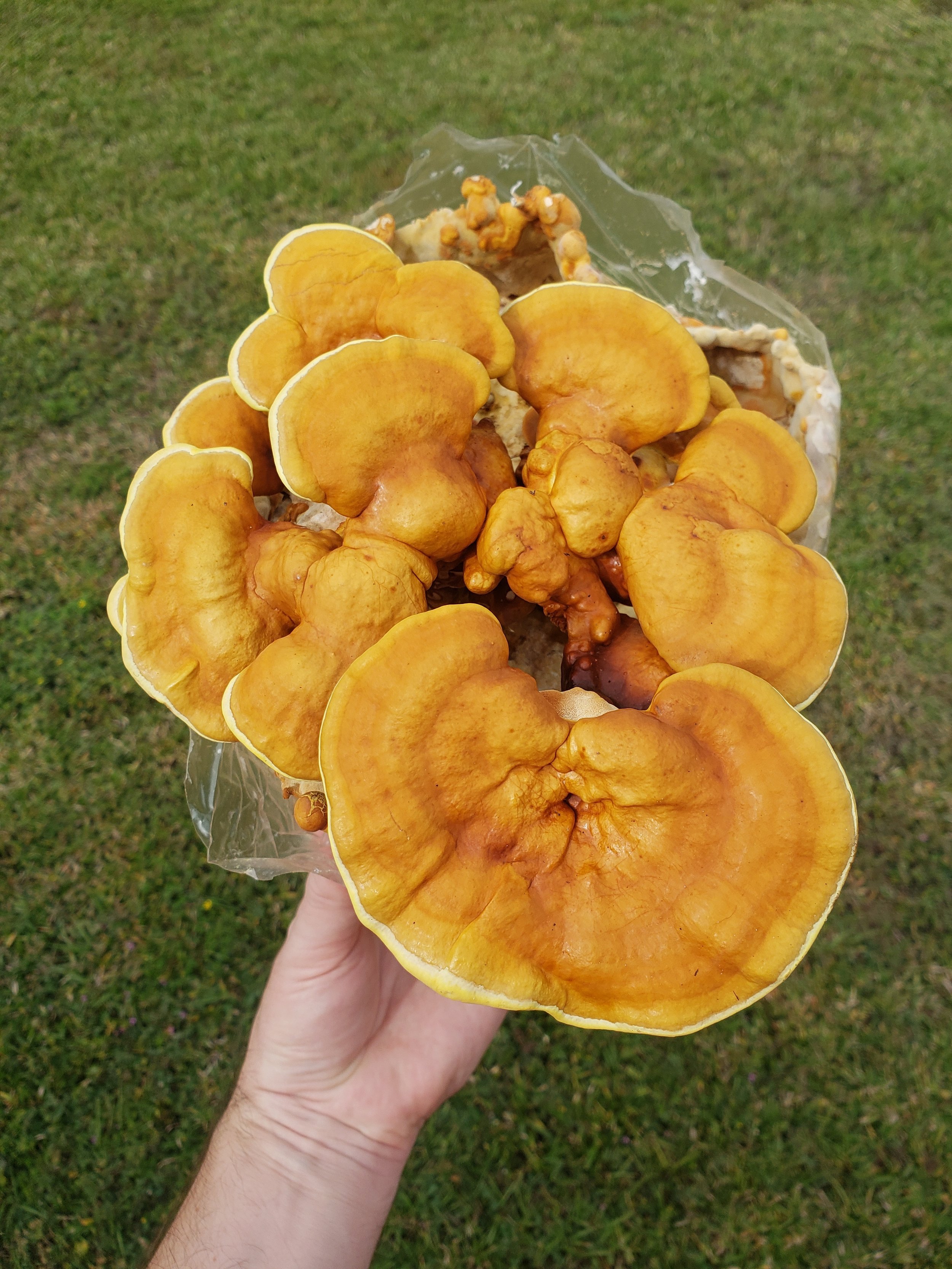
Process
It starts with a culture…
Our process begins in house, on agar media filled petri dishes, with fungal cultures derived from tissue samples or spores. We maintain our entire culture library through a controlled transfer process and/or refrigeration cycle. These cultures are then selected for commercial performance potential and transferred into a sterile grain spawn such as whole oats, wheat berries, milo/sorghum, millet, corn, etc. Because of opportunistic competitor fungi and bacteria, we perform all of our culture work in our lab using a “laminar flow hood” which pushes a continuous stream of sterile air across the work area.
Once our grain spawn is fully colonized with our target species, and free of any contaminants, it is then selected for expansion into our fruiting substrate. Depending on the species and our available materials, our fruiting substrate will contain some combination of sterilized hardwood sawdust, wheat bran, soy hulls, alfalfa, straw, or other agricultural waste products. These ingredients provide our gourmet fungi with the essential nutrient values that they need to thrive, and are loaded into filter patch bags before sterilizing. After inoculating the sterile fruiting substrate with our sterile pure grain spawn, the sawdust mixture is left in our incubation room until the culture in question has fully grown through the substrate and completed its consolidation phase (some mushrooms require longer periods of incubation).
Once our mushrooms have completed their incubation phase, they are either ready to go into our fruiting rooms, or they will be cold shocked in our cooler prior to entering the fruiting room. Once they arrive in the fruiting room, the bags are cut open using methods specific to each type of mushroom. The fruiting room is appropriately sanitized, humidified (80-90% RH), and provided with ample airflow so that the mushrooms receive plenty of oxygen. Mushrooms, like humans, require fresh air and oxygen for respiration, and expel CO2 in the process of growing. Without proper aeration and ventilation, the build up of CO2 would lead to crops that are highly undesirable, improperly formed, and low yielding. For this reason, it is imperative to provide an environment that is beneficial to each mushroom we grow.
During the fruiting phase, the mushroom culture will first produce “primordia,” which are the first signs of actual mushroom bodies. From here, the mushrooms will begin to form and mature over the course of several days to several weeks, depending on the speed of each particular mushroom. When the mushrooms reach their peak harvest point, we remove them from the substrate and distribute them as quickly as possible to maintain the freshest product on store shelves or in restaurant dishes.
